The Mental Game of Permit and Steelhead Fishing
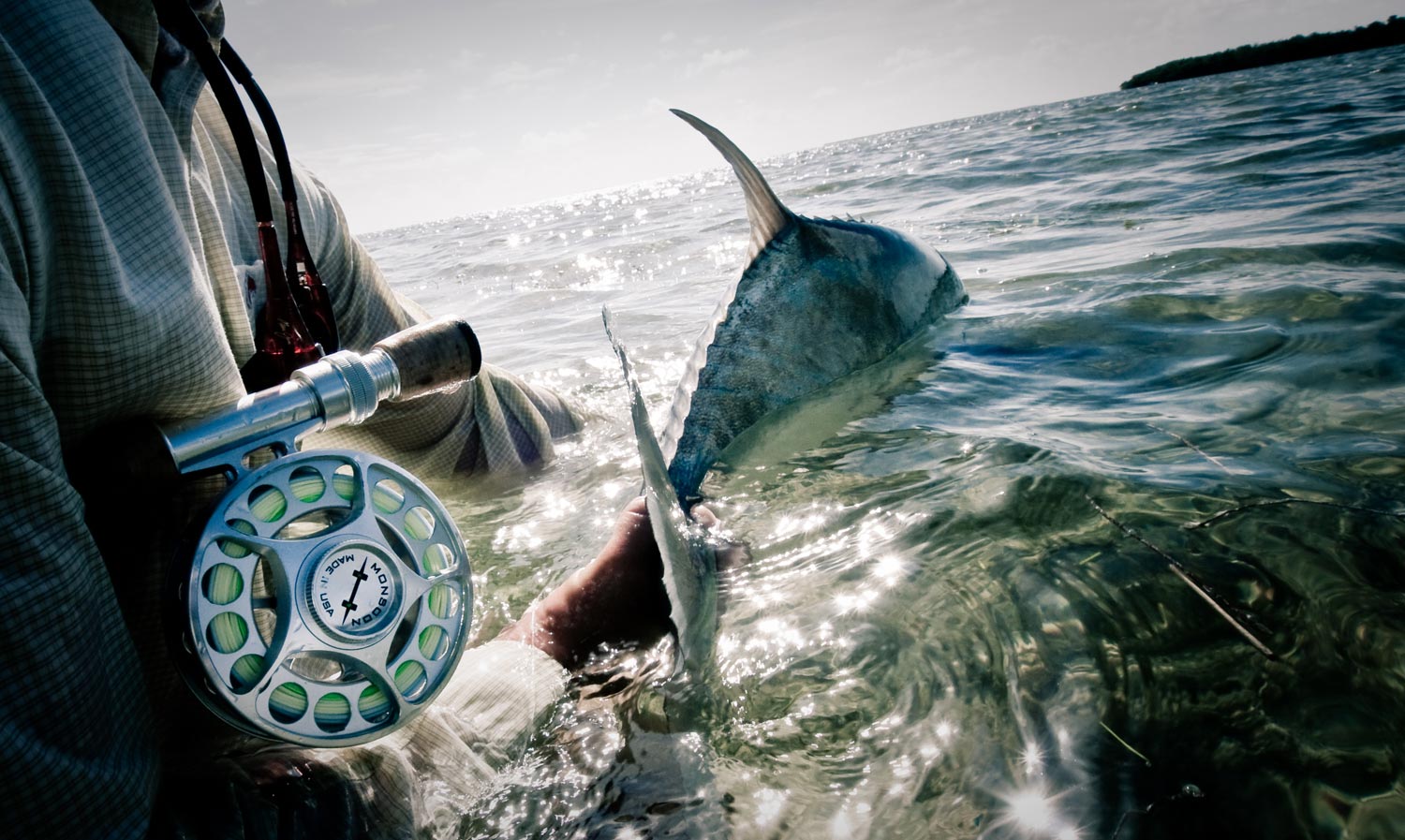
By Tucker Ladd
I will be the first to admit it — I have a permit fishing problem.
While that is a hard enough itch to scratch, living in the urban wilderness of Denver, CO, I have also developed a bit of a steelhead fishing problem in recent years. While more often the idea of standing on the bow of a flats boat supersedes the thought of standing waist-deep in 40 degree water, the satisfaction of hooking either fish is something that seems to haunt me daily.
What I have always loved and appreciated about fishing for both permit and steelhead is how these fish challenge, reward, and break you as an angler. But it’s not just what these fish do to the psyche of an angler that makes pursuing them similar. There are also similarities in the practice of trying to catch one of these elusive fish on a fly.
IT’S ALL A MIND F*&#
Let’s face it, there’s a lot of “down time” when fishing for either of these species. By “down time” I mean the duration of time spent in between catching either fish. Now sure, there are those epic days when one may hook, and even land multiple fish in a day, but these days are certainly few and far between.
Any normal day of fishing for either species requires a mental toughness, to not only get through the down time, but stay focused, alert and always ready for when the fish eats (steelhead) or presents itself (permit). Any angler who has regularly pursued either fish has their own technique or methodology for working through this mental challenge. And let’s be clear, it is a tremendous challenge.
Day 1 is always easy. You’re fresh on the water, the possibilities are endless, and you’ve got that feeling of “this is the day!”
Day 2 you’re feeling challenged, but the previous day’s fish sightings or bumps are keeping your energy up and your attitude in check. Even if you didn’t see or feel any fish, the “newness” of the experience is keeping you going.
Day 3 can go a couple of different ways. Scenario 1 is
Read More »Trust The Boo
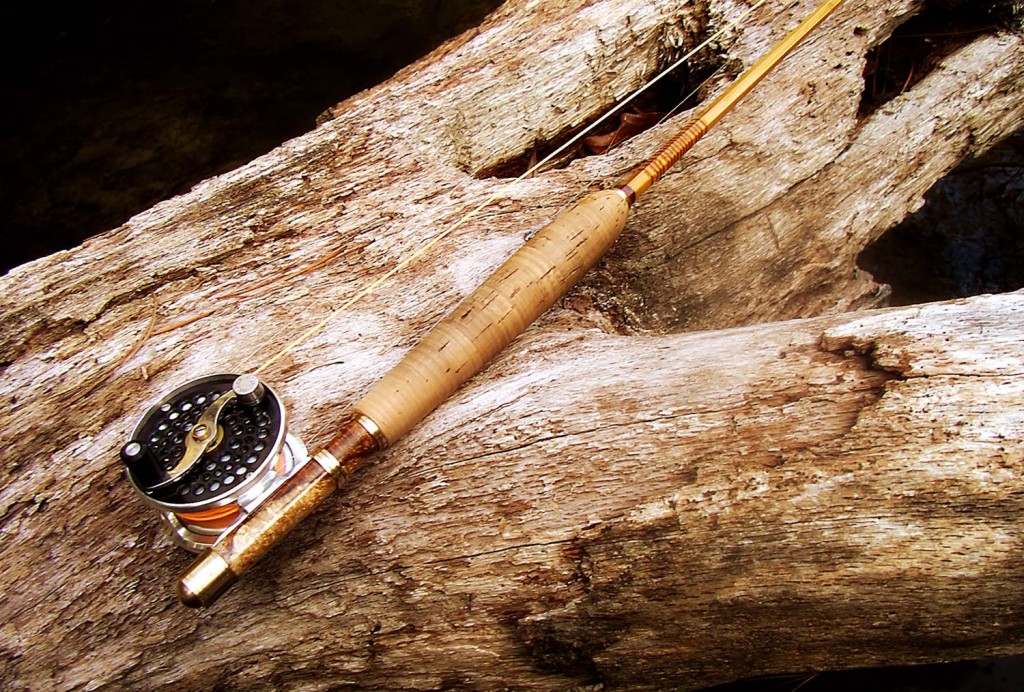
I’ve fished bamboo rods my whole life and I’ve made my own for the last twelve years or so.
I can’t tell you how many times I’ve been asked if I was afraid to fight big fish on a bamboo rod. The answer is no. I’ve broken my share of rods but only once did I break one fighting a fish and that was totally my fault. I’ve landed more fish over twenty inches on bamboo than I can count, a few pushing thirty. The two fish pictured were both landed on a seven foot four weight. The tip on that rod measures only thirty thousandths of an inch in diameter but it handled those monsters just fine.
A 27″ Hen and a 28″ Male Both Landed on the 4 Weight
Bamboo is a remarkable material. When properly heat treated it has amazing strength. Traditional Japanese carpenters use bamboo nails cooked in a wok and high rise construction all over Asia is done on bamboo scaffolding. Do bamboo rods break? Of course they do but a well made rod is much stronger than you would guess and if properly handled and cared for it will take whatever a fish can dish out. I’ve heard it said that fisherman break rods, not fish, and I think that’s true. With that in mind, here are some tips on how to keep that cane rod fishing for many years.
• Treat it right. Bamboo doesn’t take a lot of maintenance but there are some things you should think about. Rot is a death sentence for a cane rod. Rod makers spend a lot of time on their finish and it can last a lifetime but it’s not bulletproof. Never put a rod away wet. This is the most common mistake guys make with their rods. When you put a rod in a tube with an o ring seal any moisture on that rod or it’s sock is in there until you open the tube again. That gives moisture plenty of time to work through the finish and into the wood. I set mine out on the mantle in the sock overnight before storing them. The second big finish mistake is leaving the rod in a hot car. If you leave that rod tube in the sun in a hot car the finish will bubble and no longer protect the cane. If you have to leave a rod in the car keep it in the shade and take the cap off for ventilation.
• Ovoid physical traumas. A bamboo rod will bend like grass in the wind. What will break it is sudden physical trauma. For example, trying to rip a fly out of tree leaves with a brisk casting stroke, as I watched a good friend do with my rod once, works every time. Running the tip headlong into a tree while hiking in doesn’t help. Hitting the rod with
Read More »The Double Haul
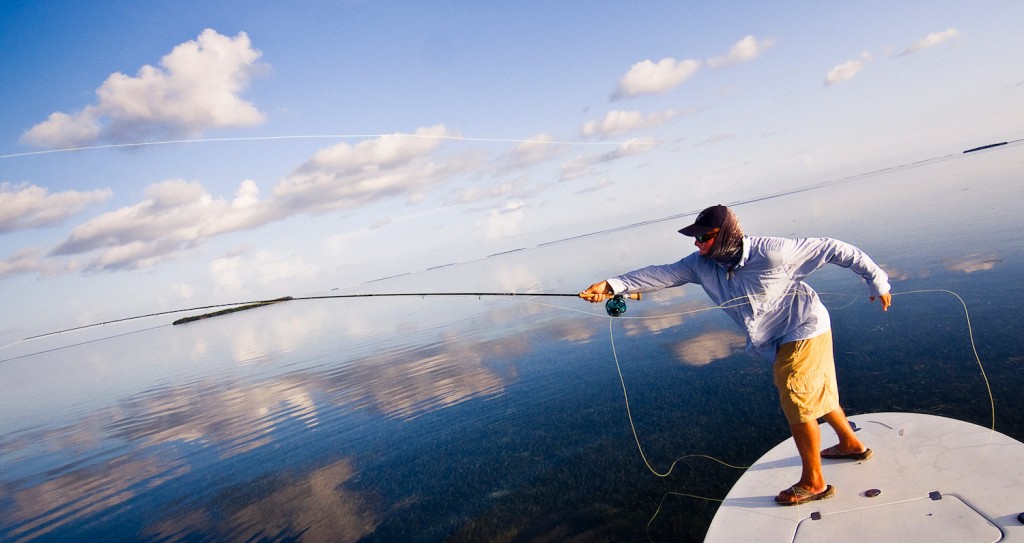
A good double haul is curtail wherever you’re fishing.
Never more than in salt water. A lot of anglers, however, find it mystifying. Here’s Capt Joel Dickyto explain how you can have a great double haul.
WATCH THE VIDEO!
Read More »Tandem Tactics for Trout. Part One: Touching The Surface
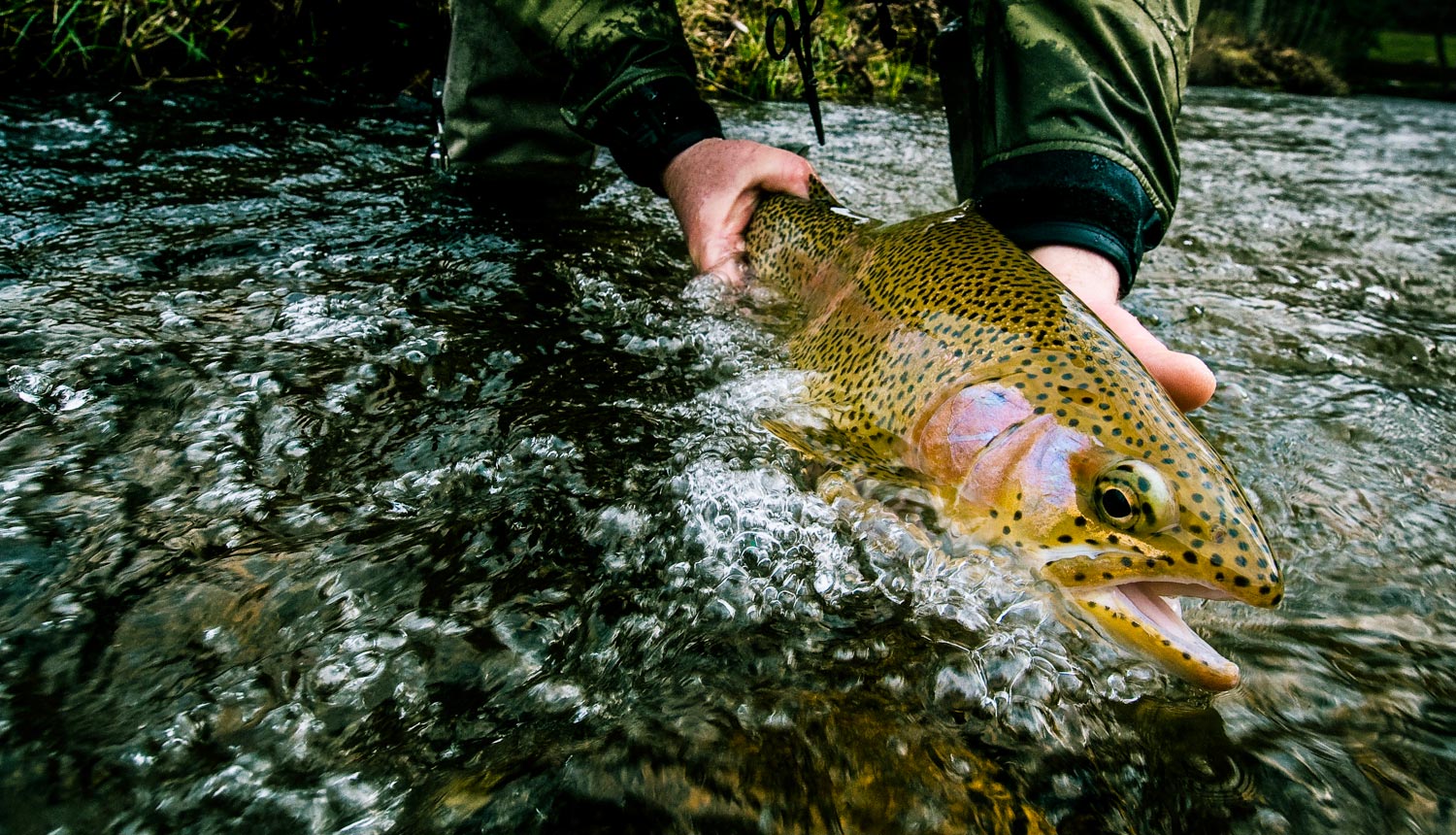
FOR A WHOLE LOT OF REASONS, TWO FLIES ARE BETTER THAN ONE.
There’s nothing new about fishing teams of flies. European fly anglers have fished elaborate multi-fly systems, called casts, for generations. Most serious trout anglers here in the US regularly fish two or three flies, where regulations allow. Still, there are many anglers who resist this technique. These anglers are often intimidated by casting a team of flies and, perhaps more often, just not sure what to tie on.
Nymph rigs, with split shot and indicators, are a challenge to cast but the second fly is really not the problem. When the setup tangles, the split shot is generally the culprit. If you are comfortable casting split shot, you will likely not have trouble with the extra fly but if you are still concerned, consider replacing that split shot with a weighted nymph. A tungsten bead or some lead on the hook shank can sink your setup as effectively as shot and may catch a fish.
My nymph rigs almost always include two or three nymphs and at least one split shot. Yes, like everyone else who owns a fly rod, I occasionally get a tangle. I’m pretty good at getting them out and adhere strictly to the two minute rule. If it’s going to take more than two minutes to untangle, I cut my flies off and re-tie.
There are a couple of things you can do to reduce tangling with weighted set ups. Tangles usually result from slack in the system. Slow your cast down and focus on making nice clean loops. The smooth application of power and abrupt stop are never more important. In truth, most tangles do not form in the cast itself but are due to a failure to control your line while not casting. Fish often help with this. Missing a fish on a small trout stream often ends in tree climbing. Be conscious of you rig as you move from spot to spot and set up to cast. This will cut out a lot of the birds nests.
Dry Dropper rigs
The most commonly used team of flies is the dry dropper. There are two common strategic ways of looking at this technique. The first is
Is Our Thinking About Flies All Wrong?
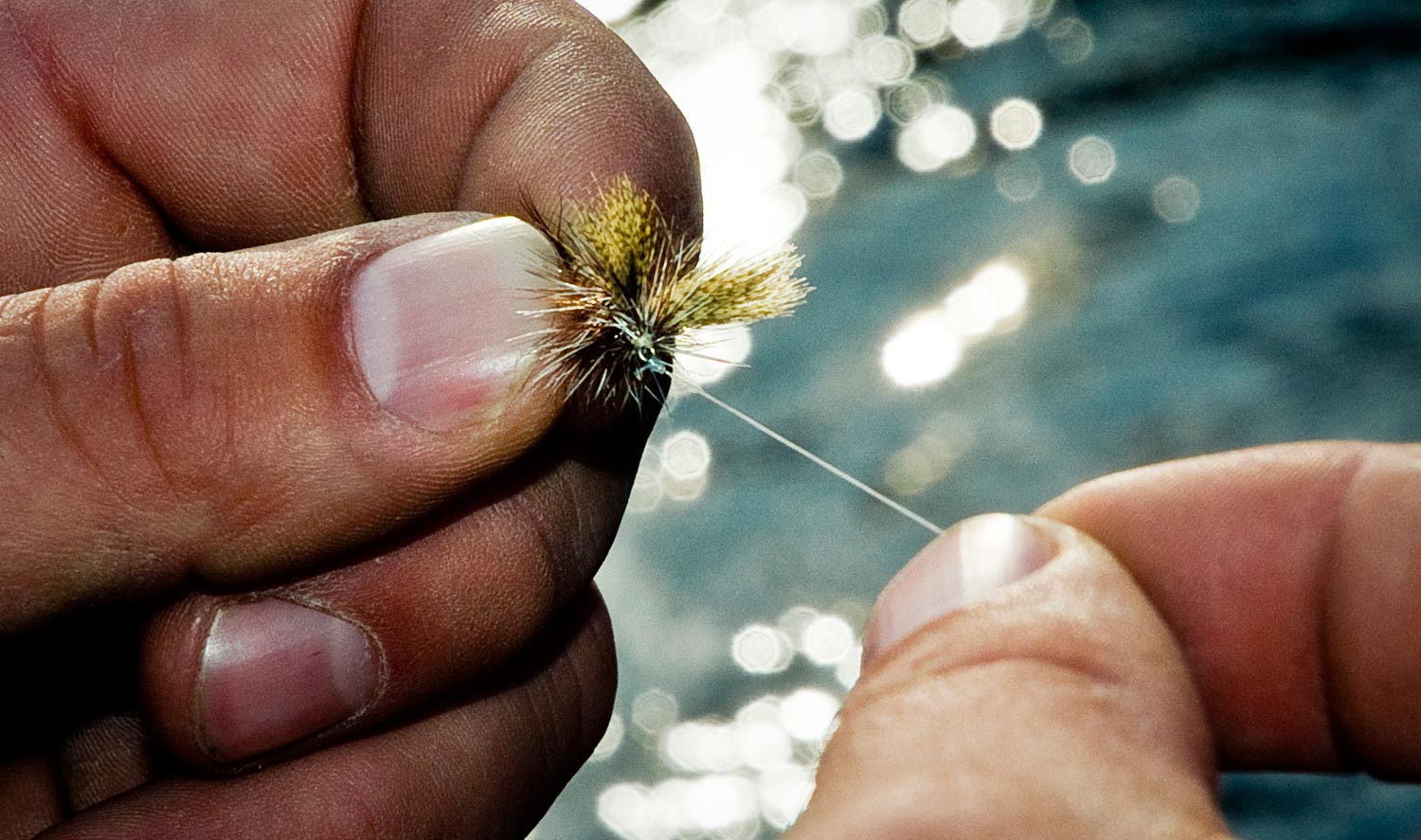
By Dan Frasier
What if I were to tell you there is no such thing as a trout fly?
A few days ago my good friend and fly designer Steve Martinez posted a link to one of his flies that Orvis carries; his Frankenstein Sculpin. I love this fly, but his comment intrigued me. He wrote; “Although I designed this fly for carp, it has been a killer smallmouth fly this year here on the Great Lakes.” No doubt that’s a true statement. It’s a killer fly. But my first thought was, “Well, duh. It’s a fly that intends to look like a Goby, the major baitfish on his part of the Great Lakes. Of course it works for anything eating them.” And that is when it occurred to me; We’ve been doing it all wrong.
In my book, The Orvis Beginners Guide to Carp Flies, I emphasize repeatedly that there is no such thing as a carp fly. There are flies, designed to look like certain foods, that work where carp eat those things. If you don’t match the pattern with the food in the area that carp are eating, you’re SOL. Carp aren’t special in this way. Trout flies work under the same premise. An Elk-hair Caddis works where trout are eating caddis and doesn’t where they are eating scuds. And, an Elk-hair Caddis works on carp that are eating caddis and doesn’t where they are eating Gobies. So, is the Elk-hair Caddis a trout fly? Or is it a fly that works on fish eating caddis? I think the answer is obvious.
Yet when I look through any fly catalogue from the major manufacturers, the overriding theme seems to be to segregate flies by species. Wanna catch a pike? Better check out the pike flies. Fishing for smallies? Turn to the bass section. We ignore the fact that these species key on certain foods at certain locations just as much as trout do. We also ignore that many different species in that location will be all eating the same food organism; that a hex fly will work on smallies eating hexes just as well as it does for trout eating hexes. That’s why flies created for one species are frequently used by experienced anglers for others.
The experimentation and expansion of the species anglers chase with the fly seems to be increasing at an exponential rate. No longer do you hear talk of certain fish species being lesser than others. People celebrate catching panfish without apology. Carp are the obvious poster child but all species seem to be looked at as something worth chasing. From gar to whitefish to musky, the world of opportunities is evolving within flyfishing, and for that reason we need to change the way we categorize flies. It’s time to
Read More »Build Your Own Fly Rod: DIY Video Series
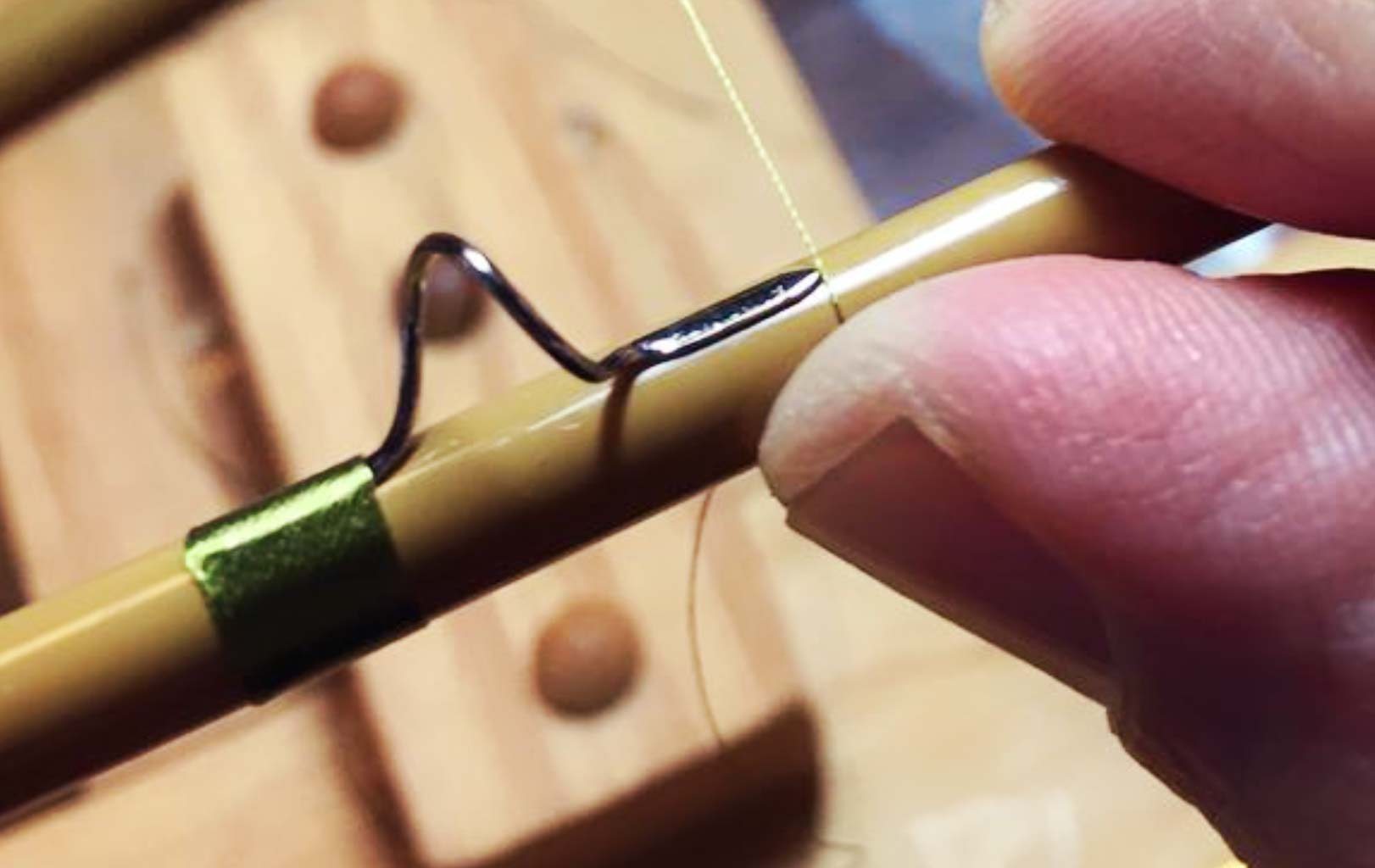
EVER THOUGHT ABOUT BUILDING YOUR ON FLY ROD? WITH THIS DIY VIDEO SERIES YOU CAN!
We are really excited to be working with Matt Draft, of Proof Fly Fishing, to bring you this great step-by-step tutorial on building a graphite fly rod.
Building a rod doesn’t have to be expensive or difficult. There are kits available that make it well within reach of most anglers and you probably have many of the tools you need around the house. With the right guidance and a little patience, you can do it.
There’s nothing quite as rewarding as fishing a fly rod you made yourself. Over the next seven weeks Matt will take you through the process step by step and help you up the learning curve to successful rod building. These videos will live on the G&G YouTube channel for your reference any time you need help.
As a special thank you to G&G readers, Matt will be offering free shipping on all of his kits for the next seven weeks. Just use the code G&Gfreeship on his web site.
Today we start with video #1, Rod Building Tools and Equipment. Matt will show you everything you need to build a fly rod at home and you’ll be surprised how much of it you already have.
Read More »Lighting The Way
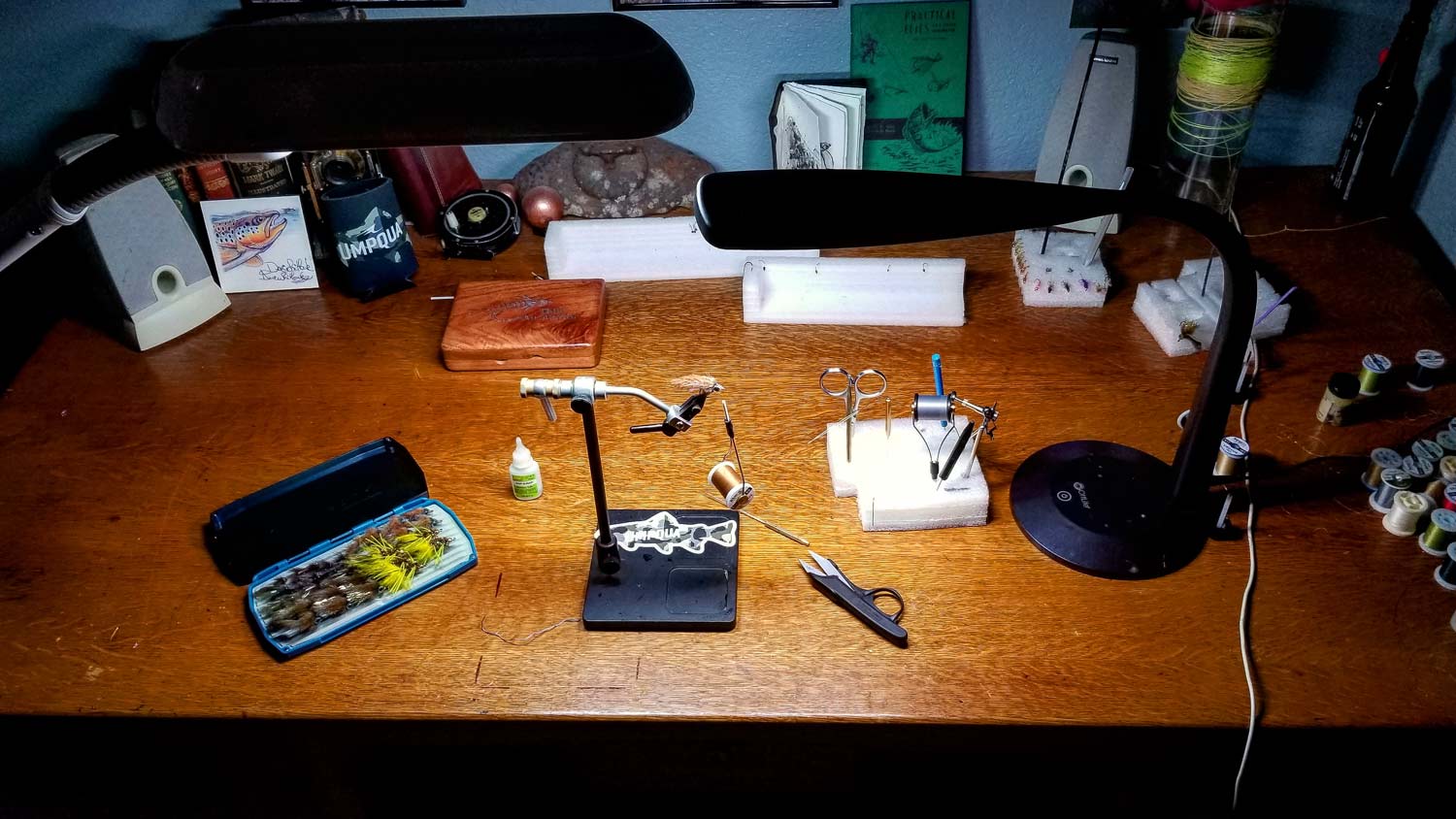
By Bob Reece
I leaned forward to check the UV coat that I had just applied to my finished fly.
The quick searing pain in my fore head reminded me that I had come too far. This was the last straw for me, the desk lamp that I had owned since college was on its way out. Along with its propensity to heat up, I had no idea how much my favorite lamp was adversely impacting the quality of my tying.
Having quality lighting at your fly tying station is essential for making the most of your time. Since my sentimental departure with my first tying light, I’ve embraced the use of natural spectrum lights. The two lights that I currently tie with are produced by the Ott Light company. The larger desk top model uses a bulb. Conversely the smaller and more portable model uses LED lighting. Both lights produce almost no heat.
More importantly than the reduction of heat is what these lights do for the eyes of tier. Fly tying is one of the most strenuous activities with regard to eye strain. Tying lights that produce light within the natural spectrum greatly reduce this stress. This helps to create a more positive tying experience and also allows for longer tying sessions.
In addition to a lack ocular discomfort, this genre of lights helps the tier to more accurately see the colors of the materials that they are using. That accuracy can
Read More »Omar
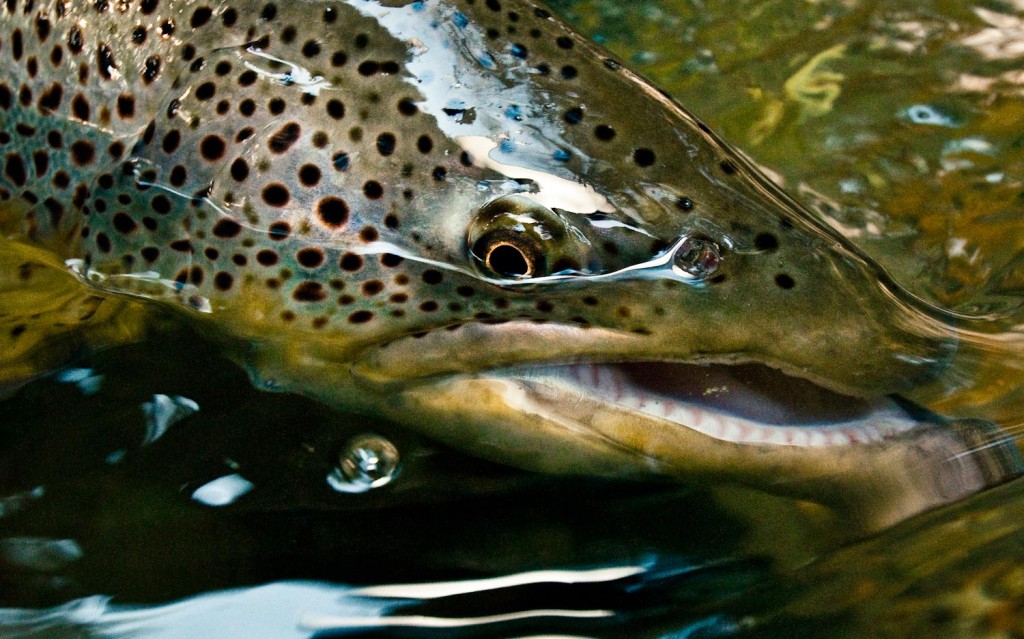
By Louis Cahill
“HE LEARNED, BECAME OLDER, WISER AND, YES, BIGGER. HE BECAME A BETTER FISH AND TO CATCH HIM I WOULD HAVE TO BECOME A BETTER MAN.”
Omar was a tough guy. Mean, if you got right down to it. A loner. Seldom seen, and when he was, there’d be a fight. Still, there were a great many things about Omar that you couldn’t help but find beautiful. The most remarkable being his smile. A mischievous maw, impish and wicked. A jaw like a big chrome bumper, gleaming with perfect white teeth. A rip saw for a mouth.
His physicality was striking. Taut as a bow string, his muscles refined and specialized like an Olympic athlete. He seemed misplaced in time. An evolutionary leap forward, or maybe back. His body like a blade carried by some ancient Samurai. Hardened, honed, perfect in every detail, unsheathed and set free of its master, to do as it will.
Like Ali in his youth, cocky and brash. The kind of confidence that you just knew would get him into trouble. Like Hemingway in old age, dark and brooding but still dangerous. The old man that might still issue you an ass beating if he didn’t like your looks. Omar asked for nothing. He took what he pleased and he demanded respect. He reminded me of my father, and maybe that’s why I loved him.
Omar was twenty-two when I first met him. It was in the fall and the trees were red and gold. The days were getting cold and the sun huddled close to the horizon. There had been a heavy rain and Fightingtown Creek was high with just a bit of olive color. The fishing had been slow and I was cold and tired.
The sun never really finds its way into that creek for long. Peering up through a gap in the rhododendron, bright slashes of amber in the tree tops told me the day was winding down. I cast a small streamer into a bend upstream and waited as the current swept it under a Buick size boulder at the head of a deep run. I stripped and my line came tight.
The name Fightingtown is a bit of a mystery. I’ve been told that there was an Native American village on the headwaters in a place now called the Big Frog Wilderness. The old people say that the Indians kept bull frogs and made them fight for sport. The white men called the village “Big Frog Fighting Town.”
I don’t know if any of that is true but it could be. The place is near the sight of Fort Gilmer where, in 1838, General Winfield Scott and his men, under the terms of the New Echota treaty, rounded up the last of the Cherokee Indians in Georgia and began the westward march we know as the Trail of Tears. It’s easy to believe that some of that native blood was spilled into the water of Fightingtown. At any rate, the name suits it.
Everything about Fightingtown creek is inhospitable. It’s a thicket, a briar patch, the home of Brer Rabbit. In the days, when I met Omar, it ran high and hard over slick rocks with sharp edges. I seldom left there without water in my waders, and often I was bleeding. My face scratched from pushing through mountain laurel, spider webs clinging to my ears.
It winds like a labyrinth through hills as craggy and scarred as the faces that glare over shotgun barrels in its headwaters, places like Hells Holler and Devils Den. It flows past forgotten cemeteries and auto graveyards, past crumbling abandoned home places and hemlocks as old as the sky. It turns back on itself so often you start to think it runs up hill. It is the lost soul of Appalachia. It is my home water.
“Those Fightingtown fish are bullies,” my buddy Dan always said. I’d struggle and suffer down there, bent double at the waist with a branch poking in my ear, trying to cast. Plenty of days I’d go home dirty and sore without a tug on the line to show for it. When I hooked a fish landing it in that thicket was like boxing a bear in a closet. They are a riddle, those fish. They break every rule and in learning to catch them you become as unconventional as the place itself. When you do learn how they think and your are willing to fight them like they must be fought, even if it means a broken rod or a bleeding shin, then you will discover Fightingtown’s secret: Leviathan.
Landing Omar the first time was mostly
Read More »Small Stream Recon Part I
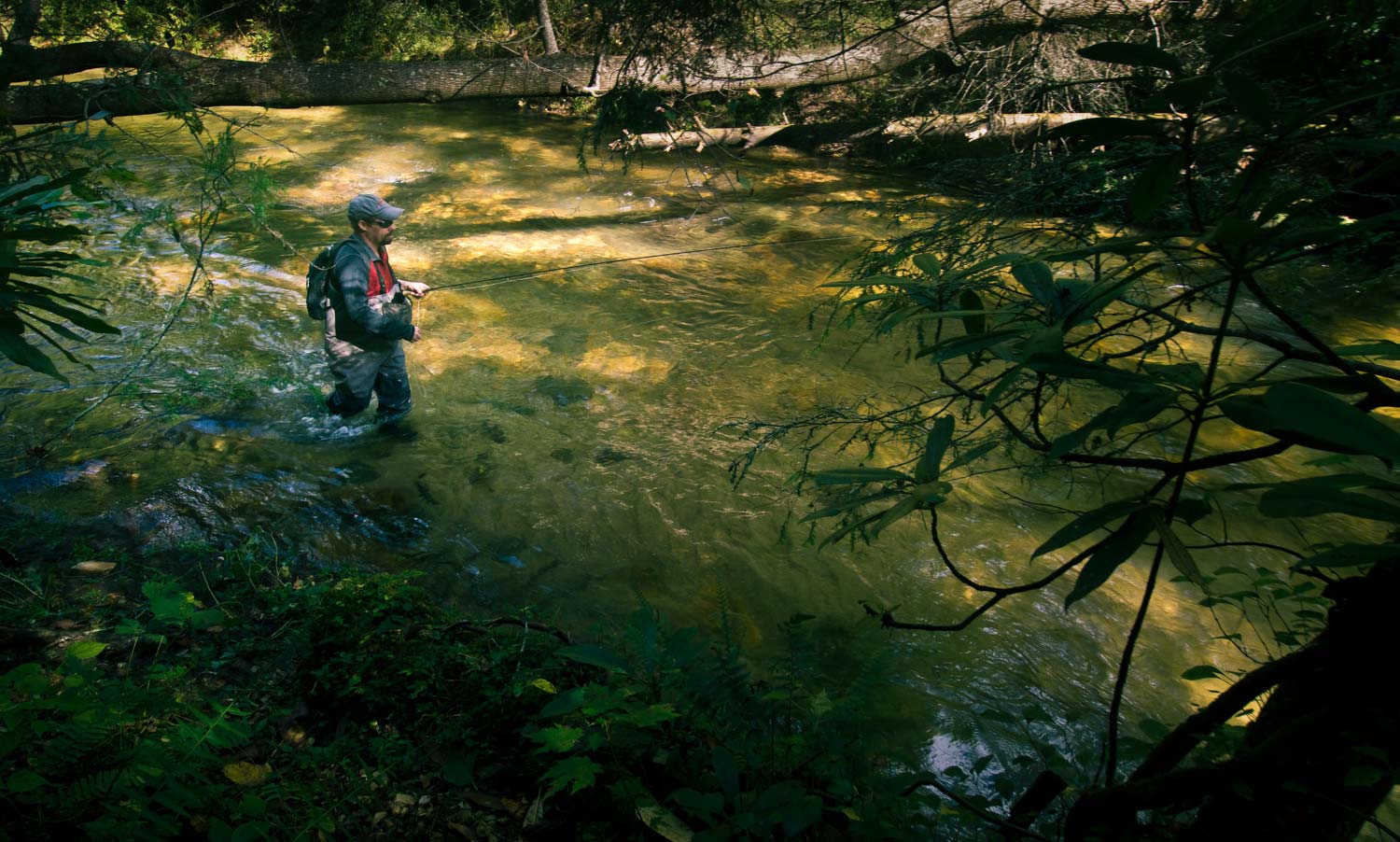
By Jason Tucker
Small streams have always held a special place in my heart.
For one thing, where I lived in the tip Northern Michigan, all we had was small streams, and lots of them. I cut my teeth on small streams. It was a long drive for me to fish bigger rivers like the Au Sable or Manistee, but small streams and creeks were always minutes away. Another reason I loved small streams was the solitude. When I fished even the main trunks of our small streams I often bumped into other anglers, or found bait fisherman camped out on holes. If I went into the headwaters or up the tributaries I found no one. What I also often found was better fishing- more fish and less educated. I often found even big fish feeding in the open in the middle of the day.
Once I started my blog, Fontinalis Rising, I got to know a lot of anglers from down state who often asked me where to go or how I knew about these spots. I began to realize the value of being a local. By living in the same area for thirty years I had amassed quite a catalog of small streams and access points that weren’t apparent to the casual observer. I had spent most of those years hunting, fishing, foraging, and exchanging surreptitious tips with other locals. I didn’t realize how hard it was for someone from outside the area to find any decent water at all to fish. In later years I would have these same frustrations in my own travels to Canada and even Michigan’s Upper Peninsula. But over the years I developed a series of strategies for finding new and excellent water to fish, sight unseen, and having success. Here goes.
State Fisheries Agencies Maps and Websites
Before the internet became practical to use from home, much less from your phone, Michigan’s DNR published a trout fishing guide for the entire state that included color coded maps of all the known trout waters in the state. I found a lot of fishing spots using this. The default color for general regulation streams was green, and often it was the headwaters and small tributaries that were etched out in green. I spent some time on special regulation sections, but it seemed that every time I fished the “green” streams, I caught more fish, saw fewer people, and had more fun.
This map and guide is no longer in print because it is available on the internet. I still have a print copy from fifteen years ago which is very useful when I’m in the many areas of the state that still lack cell service. Georgia has a print map that outlines all the trout streams in the state.
With the advent of advanced mapping applications on the internet and cellphones there are even more powerful tools available.
Read More »The Homemade Yeti Cooler
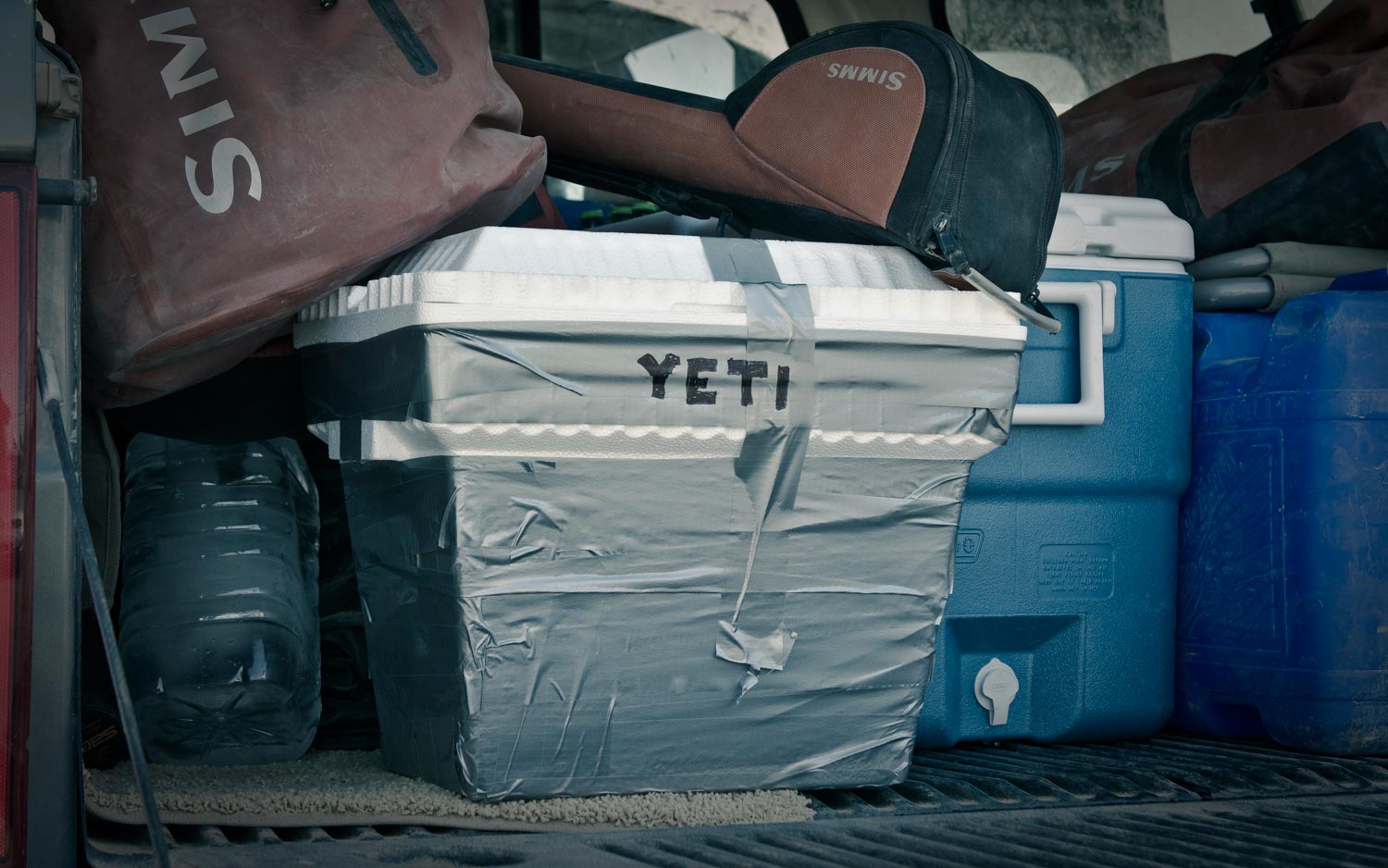
Don’t get me wrong, your Yeti is a great cooler and, yes, you can use it for a poling platform, sort of, and it does make you look very cool but if you’re like me and you travel a lot to fish it’s just not practical.
What I need is a cheap cooler that I can use for a week or two, then toss in the garbage on the way to the airport. I suffer a little guilt for landfilling a bunch of styrofoam, but the damage to my wallet is minimal.
I’ve used styrofoam coolers from grocery stores for years. On photo shoots I will sometimes have a half dozen of them. The problem is, they don’t hold up. You can buy cheap plastic ones but they are still twenty bucks or so and they’re not as good as the styrofoam at keeping ice. If you pitch six of them, you’re tossing $120. My frugal soul can’t stand that.
Five or six years ago I figured out this cool trick for making your styrofoam cooler bomber. A couple of layers of strategically placed duct tape on the sides, top and bottom make them surprisingly tough. Adding duct tape hinges and a lid helps to keep your ice longer by keeping the lid shut tight.
I’ve been doing this for years and I have
Read More »